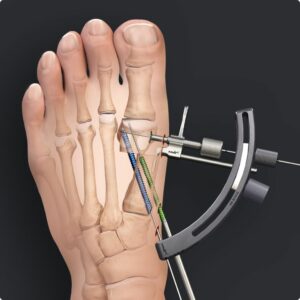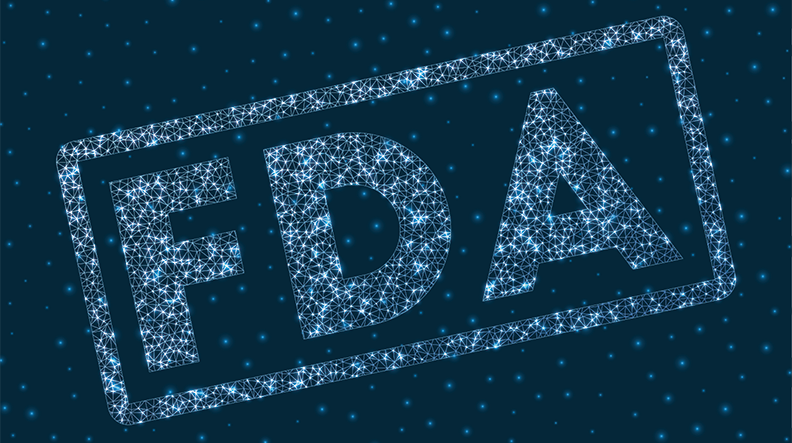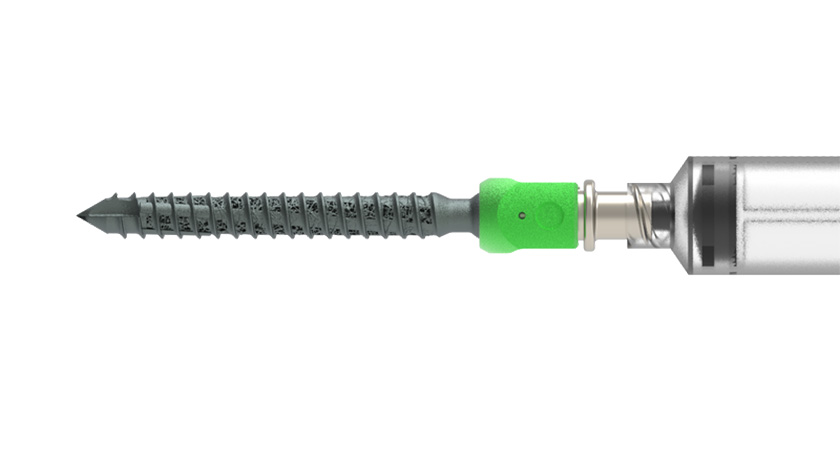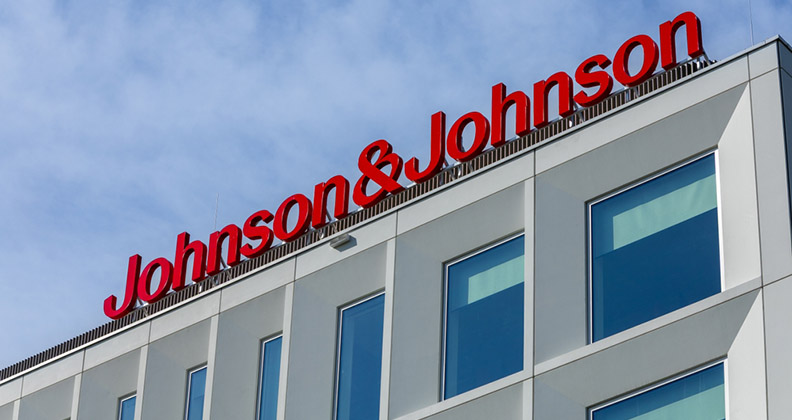
It starts when the bones of the great toe fall out of alignment. The first metatarsal shifts and rotates outward, while the phalanx segment turns in the opposite direction. An unsightly bump protrudes from the side of the foot. Walking is difficult. Shoes hurt to slip on.
It’s awful.
“Bunions affect one in three Americans annually, and many patients silently endure daily discomfort,” said Michael Rankin, Vice President of Marketing and Medical Education of Foot & Ankle at Stryker. “They don’t always recognize the defect as a genuine medical issue, let alone one with easily accessible solutions.”
Rankin noted that more than 7,000 surgeons treat bunions, performing over 322,000 procedures each year. Nevertheless, some experts argue that this market remains largely untapped — perhaps because patients are unaware of new minimally invasive treatment options and orthopedic companies haven’t yet allocated enough resources to the subsegment.
Treace Medical, a company specializing in bunion and midfoot deformity surgery, recently revealed that it has captured less than 2% of the market, which it valued at around $5 billion. There is still plenty of pie to go around, even with new entrants vying for their slice of the foot and ankle space, according to company CEO John Treace.
“Most of these companies are highly diversified with large bags of products,” he said. “Foot and ankle offerings get a fractional portion of their sales team’s time and attention. I can’t say that there’s any one of these multiline, distracted companies that’s slowing our business momentum.”
That might soon change. “Stryker intends to capitalize on the opportunity bunion surgery presents by offering innovative treatment solutions,” Rankin said.
Jeff Tyber, President & CEO of Tyber Medical, believes the bunionectomy market is often overlooked, despite a consistently high case volume. “Bunions are the second most commonly treated area in foot surgeries,” he said. “Traditional fixation methods involve crossing screws and solid screws, but companies are introducing new techniques that are expanding the market.”
Tyber’s own company is part of a new wave of innovators that are revitalizing bunion surgery by streamlining the procedure for surgeons and minimizing its impact on patients. It’s important for device manufacturers to maintain comprehensive and diverse product portfolios that ensure the effectiveness and safety of bunionectomy procedures — regardless of the defect’s severity.
“It’s all about simplification, particularly in terms of the incisions and resections that are made and ensuring that fixation methods are interosseous to reduce bone exposure,” Tyber said.
Smoother Procedures and Faster Recoveries
During a traditional open bunionectomy, surgeons correct the defect through two- to six-inch incisions made on top of the foot. They remove or shave the disjointed bone of the great toe and reposition it among the surrounding tendons and ligaments. Significant bunions might require a Lapidus fusion procedure, during which surgeons fuse the bones of the toe together. This technique can result in scar tissue that limits the foot’s range of motion.
It’s no surprise that conventional bunion surgery has not always met patients’ expectations for pain relief, noted Chris Powell, Senior Group Product Manager for Extremities and Trauma at Arthrex. However, he noted that recent advancements in surgical techniques have significantly improved patient satisfaction.
“Traditional treatment options often lead to extended recovery periods, postoperative stiffness, swelling and inconsistent correction of the deformity,” Powell explained. “Now, thanks to minimally invasive methods, surgeons can address these concerns and deliver better outcomes for their patients, who more than anything want relief from the pain.”
Minimally invasive bunion surgery is now performed through poke-hole incisions, achieving outcomes that are equivalent to or better than open procedures — with added advantages.
“Less soft tissue disruption creates an improved healing environment,” Powell said. “The vascular structures of the foot are protected, promoting blood flow and reducing swelling and stiffness. Overall, this results in a faster recovery.”
Tyber has observed a broader trend toward making smaller and more predictable incisions among surgeons who specialize in bunion surgery and the device manufacturers who cater to them. His company is currently developing the MIS Business Screw, which offers a percutaneous bunion reduction and an alternative to the traditional open approach.
“The screw represents a minimally invasive and simple-to-use approach to bunion repair that can significantly reduce surgical times,” Tyber said. “I’ve witnessed cases that take more than an hour to complete. In reality, they should be completed in 30 to 40 minutes. Our objective is to minimize the time patients spend in surgery. This is achieved through the simplification of surgical instruments that ultimately enhance operational efficiency.”
Tyber also highlighted that the MIS Business Screw is delivered pre-packaged and sterilized to the operating room, thereby saving surgical facilities the time and resources needed to sterilize the instruments.

Arthrex’s Minimally Invasive Bunionectomy platform allows surgeons to precisely realign the bones of the great toe through percutaneous fixation.
Surgeons who use Arthrex’s Minimally Invasive Bunionectomy platform operate through 1/8- to 1/2-inch incisions made on the side of the foot to realign the bones of the great toe into their natural anatomic positions. This percutaneous approach limits damage to the area surrounding the defect.
Patients are often able to walk out of surgery and remain mobile in a supportive boot or shoe during the first few weeks of recovery. They typically return to normal life activities in about 12 weeks.
The Minimally Invasive Bunionectomy platform provides surgeons with a guided trajectory system that helps direct the percutaneous placement of two parallel guidewires into the capital fragment for accurate screw placement. It includes the hardware and instrumentation surgeons need to achieve precise alignment of beveled FT screws (4.0 mm and 3.5 mm sizes) that are designed specifically for minimally invasive bunion correction.
The screws feature a zero-profile construct with a 45-degree beveled head and non-compressive threads to help maintain their length. Their larger cannulation allows for the use of robust instrumentation, which limits cortical skiving upon insertion. Arthrex’s patent-pending shifting device allows surgeons to precisely move the capital fragment laterally as needed to correct the deformity.
The Minimally Invasive Bunionectomy platform features specially designed implants and instruments that are highly adaptable and user-friendly, according to Powell.
“The trajectory guide, parallel guide and shifting device can be tailored to the needs of individual surgeons,” he said. “They can select the instruments that best suit their preferred surgical technique and the clinical requirements of their patients.”
Powell said the platform provides intraoperative and postoperative benefits. “Use of the platform results in reduced operating room time and less disruption of soft tissues,” he explained. “This can lead to fewer wound complications, reduced swelling, and a decreased risk of neurovascular and tendon injuries.”
After surgery, he added, patients experience improved cosmesis, reduced postoperative pain, quicker recoveries — up to eight weeks faster than what’s typical after traditional open procedures and Lapidus fusions — and reduced reliance on pain medications.
Surgeon Pleasing Solutions
Advancements in technology and surgical techniques that focus on minimally invasive approaches to bunion correction are beginning to gain acceptance among surgeons. Rankin said these innovations encompass procedure guides and specialized instrumentation that contribute to reproducible outcomes.
He highlighted Stryker’s PROstep MICA SOLO Procedure Guide as a cutting-edge solution in the evolving landscape of bunion surgery. “The procedure guide has become a pivotal element in the future of minimally invasive bunionectomy,” he added.
During traditional minimally invasive bunion procedures, surgeons employ a two-handed technique that involves a steep learning curve. The PROstep MICA SOLO functions as an all-in-one guide, effectively acting as a “third hand” for the surgeon.
It automatically aligns screw placement, stabilizes the head fragment and offers precise, customizable adjustments. Rankin noted that this intuitive guide simplifies the procedure, ensures reproducibility and reduces the surgeon’s reliance on a surgical assistant.
The PROstep approach revolves around percutaneous microincisions that are designed to minimize scarring and postoperative pain. Beyond bunion surgeries, the PROstep system can be used for additional foot procedures such as distal minimally invasive metatarsal osteotomy (DMMO) and cheilectomy.
“We continually collaborate with our surgeon customers to understand their challenges and develop solutions that address their unmet clinical needs,” Rankin said.
Stryker’s commitment to technological innovation and the advancement of products designed for treating bunions has led to the development of the new PROstep MIS Lapidus System.
This addition to the PROstep MIS platform delivers robust fixation stability through minimal incisions, according to Rankin. He said the platform incorporates joint preparation, triplanar reduction and a three-screw construct that’s engineered to create a tension band effect for biomechanical stability.
“We’ve enhanced the device based on surgeon feedback,” Rankin said. “The new version — PROstep MICA SOLO 2.0, which will come out by the end of the year — will include proximal guide anchoring to improve stability and provide better targeting capabilities and a more intelligent product configuration.”
Educational Outreach Matters
Orthopedic companies focused on the bunion space have found success by providing surgeons with easy access to a robust support network, including surgical training and equipment demonstrations. Companies are also conducting marketing campaigns aimed at connecting patients with surgeons and empowering them to seek treatment.
“Through surgeon education and increasing patient awareness of innovative products and corrective procedures, we can drive demand and improve clinical outcomes,” Rankin said.
Stryker’s bunion correction educational campaign uses various channels and mediums to reach potential patients. The company’s initial marketing campaign included chalk stencils drawn on sidewalks in four major cities that encouraged patients to visit freeyourfeet.org for information on bunion treatments and surgeons who use the PROstep system.
Treace Medical’s lapiplasty.com and Arthrex’s bunionpain.com are other examples of patient-specific website that provides information about bunion pathology, treatment options, what to expect during the recovery process and local surgeons affiliated with the company.
“Minimally invasive approaches to bunion correction are here to stay, and patient satisfaction is the main driver,” Powell said. “Bunions are unique in that patients can often diagnose themselves, so connecting them directly with surgeons is essential.”
Tyber underscored the critical importance of surgeon education in a crowded subsegment. “There are nearly 40 approaches to bunion correction currently in use,” he said. “It’s therefore crucial for surgeons to select the procedure that’s appropriate for their patients and establish a robust and reproducible surgical process.”
Orthopedic companies that continue to develop minimally invasive bunion repair solutions to meet the needs of surgeons and patients will position themselves for growth in a market that might not be underserved for much longer.
PM
Patrick McGuire is a BONEZONE Contributor.




